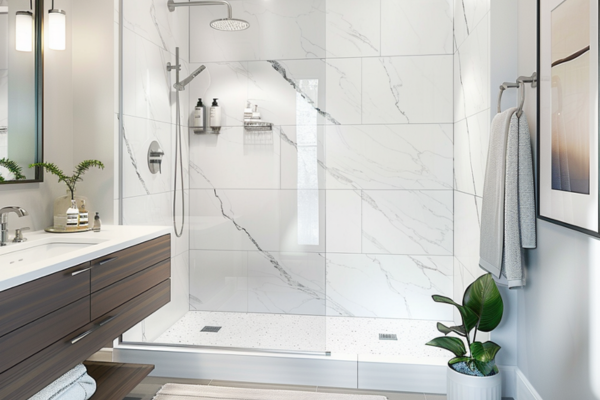Water pressure is a critical aspect of your home’s plumbing system. It affects everything from how efficiently your appliances run to the comfort of your daily showers. When the pressure is just right, your home operates smoothly. But when water pressure drops, it can cause a variety of inconvenient and potentially costly problems.
Low water pressure is more than just a nuisance. It can be a sign of underlying plumbing issues that, if left unresolved, may lead to damage or expensive repairs. In this article, we’ll explore the most common signs that your home’s water pressure is too low and what might be causing the problem.
Weak or Slow Flow from Faucets and Showers
One of the most obvious signs of low water pressure is a weak stream coming from faucets and showerheads. You might notice it takes longer to rinse off soap, fill a sink, or wash dishes. In the shower, it may feel as though water is merely trickling out, which can be particularly frustrating.
If the issue is consistent across multiple fixtures in different parts of your home, it’s likely a whole-house water pressure issue rather than a problem with a single faucet.
Washing Machine or Dishwasher Taking Longer to Run
Modern appliances like dishwashers and washing machines rely on consistent water pressure to function properly. If your water pressure is too low, these appliances may take longer to complete cycles or may not work efficiently. Clothes might come out less clean, and dishes could still have residue or food particles stuck to them.
If you notice a drop in performance or increased running times, it could be a signal that your home’s water pressure has dropped below optimal levels.
Toilet Tanks Refill Slowly
Toilets should refill within a few seconds to a minute after flushing. If you observe that your toilet tank is taking longer than usual to fill up, low water pressure could be the cause. This is often more noticeable in homes with older plumbing systems or when multiple water-using fixtures are running simultaneously.
In some cases, a faulty valve or partial blockage might be to blame, but if it’s happening throughout the house, pressure issues are more likely.
Fluctuating Water Temperature During Showers
Low water pressure can lead to inconsistent water temperatures, especially when someone else in the home turns on a tap or flushes a toilet. You may experience sudden blasts of cold or hot water while showering, which can be uncomfortable and even dangerous.
This usually occurs because your water heater struggles to maintain a balance when there isn’t enough water flow to meet demand. The fluctuation may also be a symptom of pressure imbalances in the hot and cold water lines.
Garden Hose or Outdoor Spigot Weak Flow
If your garden hose sprays water at a lower pressure than expected or your outdoor faucet barely delivers a stream, low water pressure might be the issue. Outdoor plumbing is often one of the first places people notice water pressure problems because hoses and sprinklers rely on strong, consistent pressure to operate effectively.
If the issue occurs only outside, the problem might be isolated to a specific line. But if it happens both inside and out, your entire plumbing system could be affected.
Unusual Noises in the Pipes
While strange noises in your plumbing are often associated with high pressure, they can also occur with low pressure—especially if the drop in pressure causes water to flow unevenly. You might hear rattling, banging, or whistling when you turn on a faucet or shower. These noises can indicate that air has entered the pipes due to a leak or pressure drop.
Persistent pipe noises should never be ignored, as they can point to larger plumbing concerns.
Multiple Fixtures Losing Pressure Simultaneously
When low water pressure affects more than one fixture in your home at the same time, it’s a clear sign that the issue lies within your main water supply or plumbing system, rather than a single appliance or pipe. This could be due to a partially closed main shut-off valve, sediment buildup in your pipes, or a failing pressure regulator.
In some cases, the municipal water supply itself may be the culprit, especially if maintenance work is being done in your neighborhood or area.
What to Do If You Suspect Low Water Pressure
If you’re experiencing one or more of the signs mentioned above, it’s important to diagnose the cause. Start by checking your home’s main shut-off valve to ensure it is fully open. You may also want to test your water pressure with a pressure gauge, which can be purchased at most hardware stores. Ideal household pressure typically ranges between 40 and 60 psi (pounds per square inch).
If the problem persists, it’s a good idea to contact a licensed plumber. They can inspect your pipes for clogs, corrosion, or leaks and determine if you need to replace components like the pressure regulator or water meter.
Conclusion
Low water pressure can significantly disrupt your daily routine and signal deeper issues within your plumbing system. By paying attention to the signs—such as weak water flow, slow-filling appliances, and inconsistent temperatures—you can address the issue early and prevent further complications. Whether it’s a simple fix or a more complex problem, identifying low water pressure promptly is essential for maintaining a comfortable, functional home.




